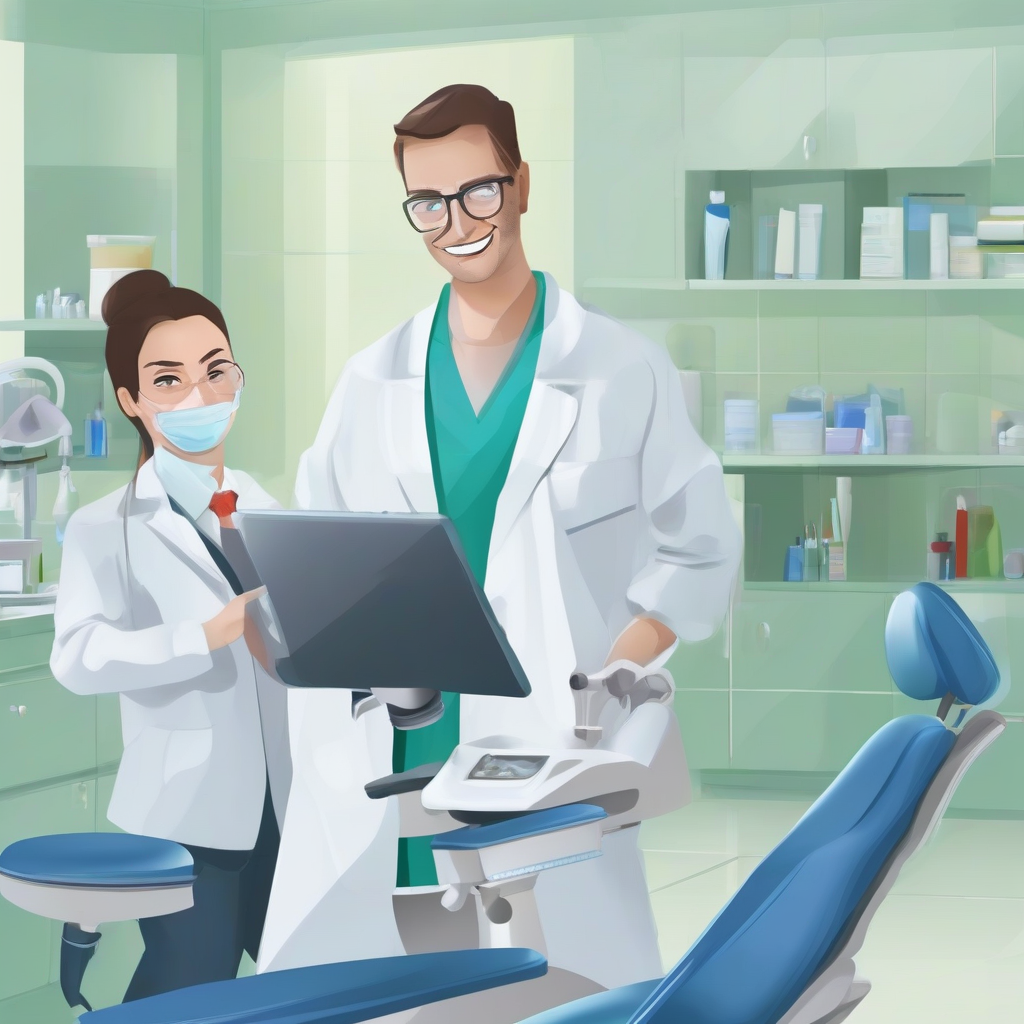Revolutionizing Dental Practices: A Comprehensive Guide to Dental Laboratory Management Software
Revolutionizing Dental Practices: A Comprehensive Guide to Dental Laboratory Management Software
Dental laboratory management software has become an indispensable tool for modern dental laboratories, streamlining operations and boosting efficiency. This comprehensive guide delves into the key features, benefits, and considerations when selecting and implementing such software.
Key Features of Dental Laboratory Management Software
- Case Management: Robust case tracking from initial order to final delivery, including detailed notes, communication logs, and progress updates.
- Order Entry and Processing: Efficient systems for receiving orders, verifying details, and assigning tasks to technicians.
- Inventory Management: Real-time tracking of materials, supplies, and equipment, minimizing waste and ensuring timely procurement.
- Technician Workflow Management: Assigning tasks, tracking progress, and managing workloads for optimal efficiency.
- Communication Tools: Secure messaging and communication platforms for seamless interaction between the lab, dentists, and patients.
- Reporting and Analytics: Generating detailed reports on productivity, profitability, inventory levels, and other key metrics.
- Financial Management: Integrating billing, invoicing, and payment processing for improved financial control.
- Integration with Other Systems: Seamless connectivity with other dental software, such as practice management systems, for streamlined data exchange.
- Quality Control Features: Tools for tracking quality assurance processes, ensuring compliance with industry standards, and maintaining consistent quality of work.
- Scheduling and Calendar Management: Efficient scheduling of tasks, appointments, and deadlines to optimize workflow.
Benefits of Implementing Dental Laboratory Management Software
The advantages of adopting dental lab management software extend across various aspects of a dental laboratory’s operations:
- Increased Efficiency and Productivity: Automation of tasks reduces manual effort and streamlines processes, leading to higher output.
- Improved Accuracy and Reduced Errors: Automated systems minimize human error in order processing, inventory management, and billing.
- Enhanced Communication and Collaboration: Centralized communication platforms improve coordination among team members and external stakeholders.
- Better Inventory Control and Cost Reduction: Real-time tracking minimizes waste, reduces storage costs, and optimizes material procurement.
- Improved Customer Satisfaction: Faster turnaround times and accurate order fulfillment enhance customer relationships.
- Streamlined Financial Management: Automated billing and payment processing improves cash flow and reduces administrative overhead.
- Data-Driven Decision Making: Comprehensive reporting and analytics provide insights into operational performance, guiding strategic decisions.
- Enhanced Quality Control: Systematic tracking of quality assurance processes ensures consistent high-quality output.
- Scalability and Growth: Software solutions can adapt to the changing needs of a growing laboratory.
- Improved Compliance: Features designed to support regulatory compliance minimize risks and penalties.
Factors to Consider When Choosing Dental Laboratory Management Software
Selecting the right software requires careful consideration of several factors:
- Size and Needs of the Laboratory: The software should align with the lab’s size, workflow, and specific requirements.
- Features and Functionality: Prioritize features crucial for the lab’s operations and future growth.
- User-Friendliness and Ease of Use: The software should be intuitive and easy to learn and use by all staff members.
- Integration Capabilities: Compatibility with existing systems and the ability to integrate with future technologies is crucial.
- Cost and Return on Investment (ROI): Evaluate the software’s cost against the potential benefits and long-term return on investment.
- Vendor Support and Training: Reliable vendor support and comprehensive training are vital for successful implementation.
- Scalability and Flexibility: The software should be able to adapt to the lab’s evolving needs and future growth.
- Security and Data Protection: Robust security measures are essential to protect sensitive patient and lab data.
- Customization Options: The ability to customize the software to fit specific workflows and processes is desirable.
- Reviews and Testimonials: Research user reviews and testimonials to gain insights into the software’s performance and user experience.
Implementation and Training
Successful implementation of dental laboratory management software involves careful planning and execution:
- Needs Assessment: Thoroughly assess the laboratory’s requirements to ensure the software aligns with its specific needs.
- Software Selection and Procurement: Carefully evaluate different software options and select the one that best fits the laboratory’s needs and budget.
- Data Migration: Plan the process of migrating existing data from legacy systems to the new software.
- System Setup and Configuration: Configure the software to match the laboratory’s workflows and processes.
- User Training and Support: Provide comprehensive training to staff members to ensure they can effectively use the software.
- Testing and Go-Live: Thoroughly test the system before going live to identify and resolve any issues.
- Post-Implementation Support: Arrange for ongoing support and maintenance to address any problems that may arise.
Advanced Features and Future Trends
The field of dental laboratory management software is constantly evolving, with new features and technologies emerging regularly:
- Artificial Intelligence (AI): AI-powered tools can automate tasks, improve accuracy, and enhance decision-making.
- Cloud-Based Solutions: Cloud-based software offers enhanced accessibility, scalability, and collaboration capabilities.
- 3D Printing Integration: Integration with 3D printing technologies streamlines the production process and expands design possibilities.
- Machine Learning (ML): ML algorithms can predict trends, optimize inventory management, and improve workflow efficiency.
- Blockchain Technology: Blockchain can enhance security and transparency in supply chain management and data sharing.
- Augmented Reality (AR) and Virtual Reality (VR): AR and VR applications can aid in design, training, and communication.
- Internet of Things (IoT): Integration with IoT devices can provide real-time data on equipment performance and maintenance needs.
Conclusion (Not included as per instructions)




